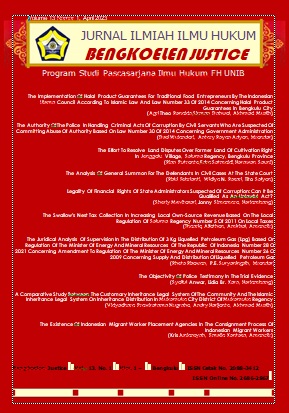Main Article Content
Abstract
Provisions for summons contained in Article 390 HIR paragraph (3) and Article 718 RBg constitute an extraordinary summons often referred to as a general summons. The provisions of the article only implicitly regulate making general summons to the defendant whose whereabouts are unknown, thus creating an ambiguity in the proceedings and the duration of the General Summon. By implicitly regulating the article regarding the General Summon, this article tries to analyze the provisions of the General Summons to the Defendants. It is because the provisions do not regulate the process and the period. It can cause legal consequences in society as well as in the application of the law. With a normative juridical method, the author reviews the regulations in national legislation and their application to 3 (three) courts, namely the Kepahiang District Court, Subang District Court and Nabire District Court, by comparing three legal theories, which are the rule of law theory, the theory of legal certainty and the theory of positivism. So that in the end, through the analysis, it can be found that the article contained in the general summons has a vague norm or lack of clarity regarding legal norms; while the rules regarding general summons are still unclear, it can be said that regarding general summons there is a legal vacuum in the rules regarding the explanation. Predictably, the condition of the vague norms and legal vacuum in the law can be abused by the law enforcers dealing with implementing general summons. For example, the misuse of legal conditions and actions contrary to temporary norms in justice-seeking communities can have social consequences where the rights of the parties seeking justice are not fulfilled.
Keywords: General Summons, Defendant, Legal Consequences
Article Details
Copyright (c) 2023 Rizki Febrianti, Widiya N. Rosari, Tito Sofyan

This work is licensed under a Creative Commons Attribution-ShareAlike 4.0 International License.

Ciptaan disebarluaskan di bawah Lisensi Creative Commons Atribusi-BerbagiSerupa 4.0 Internasional.
